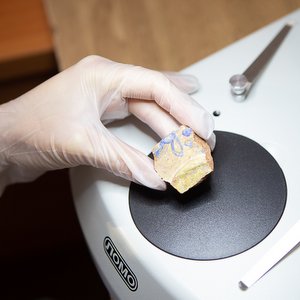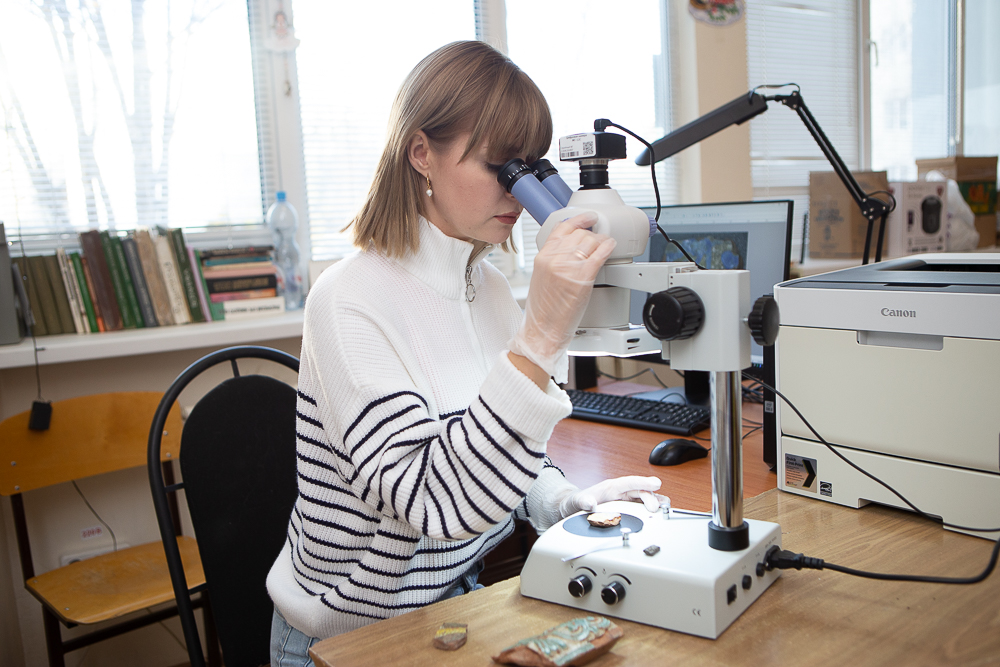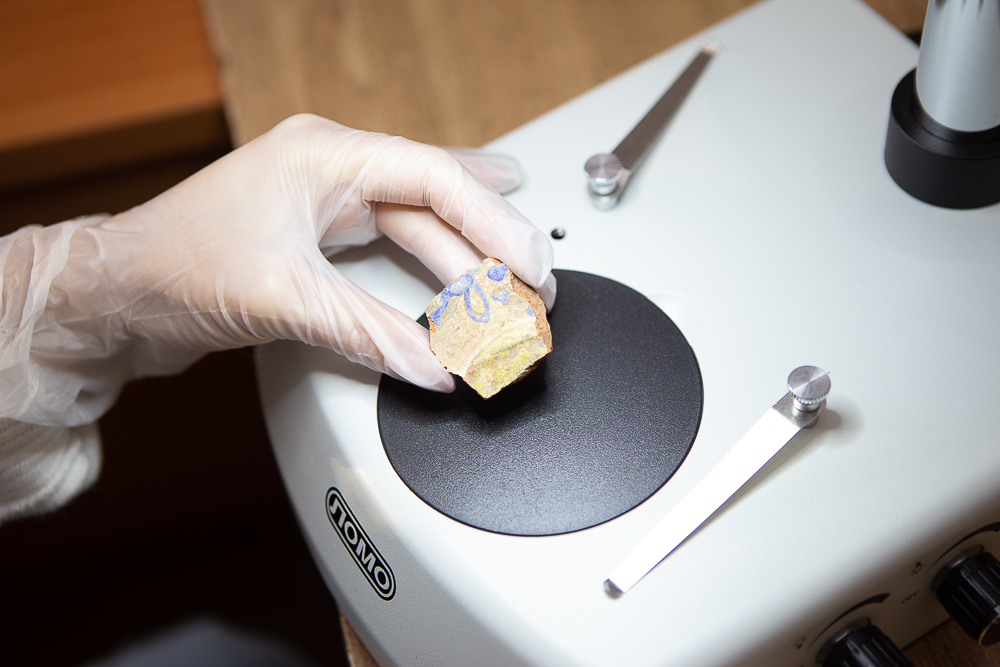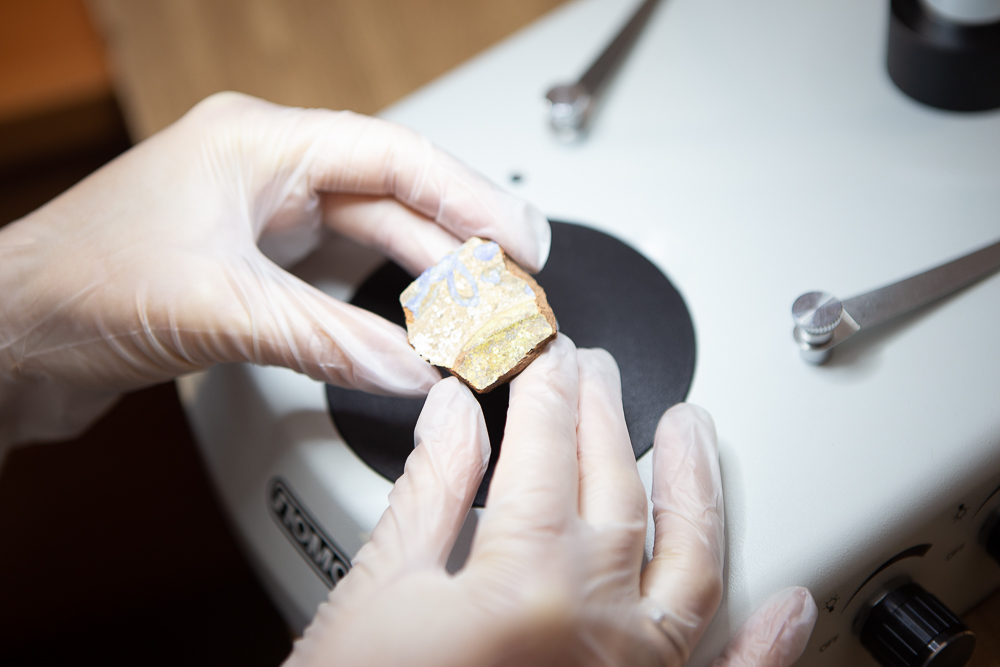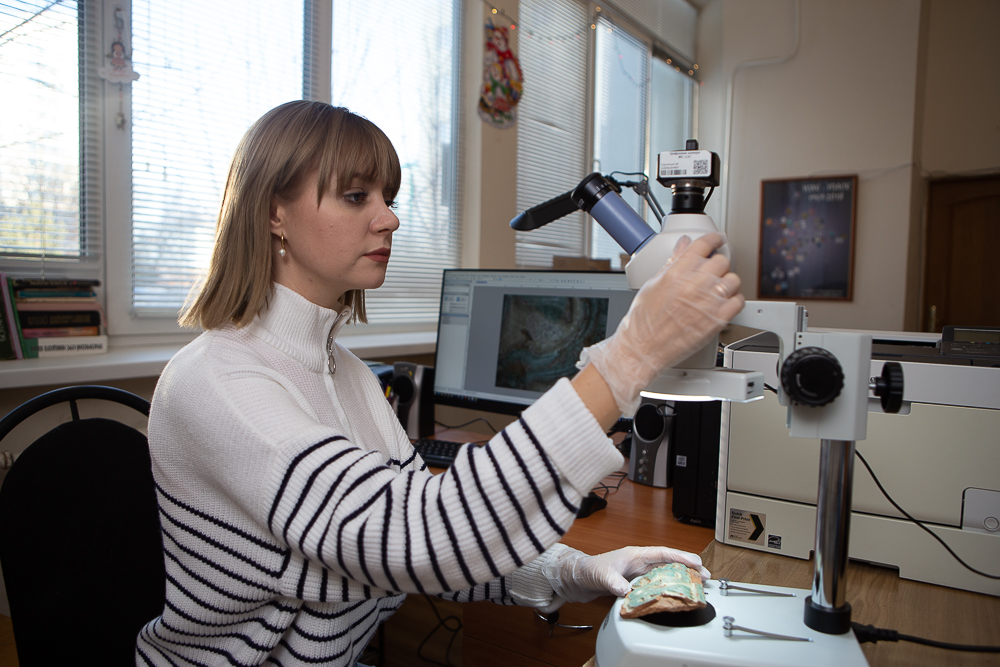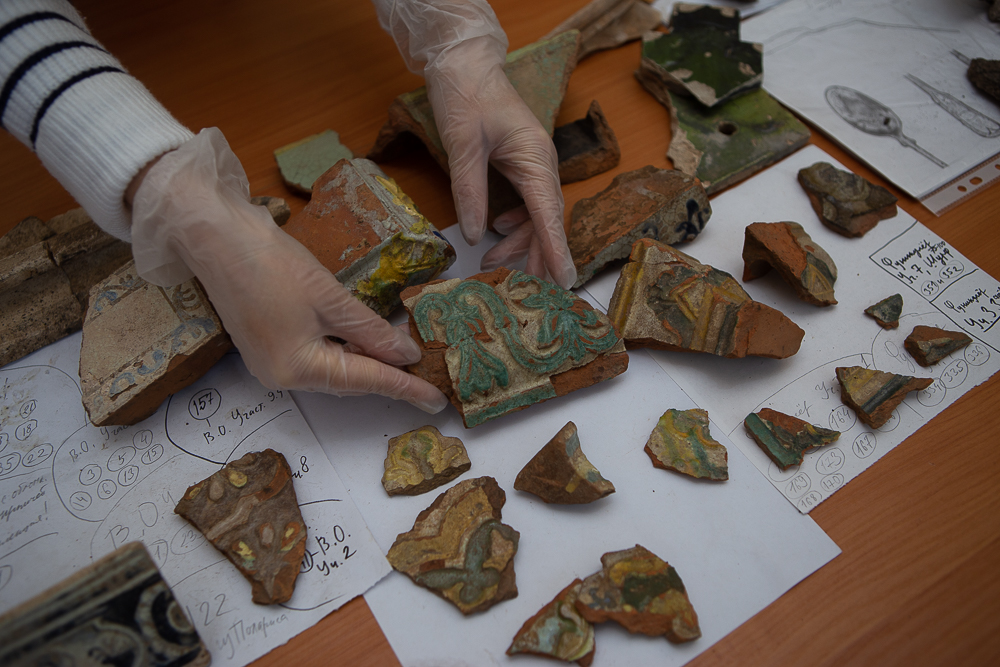"The excavations were carried out near the abandoned farm of Bannov in the XIX century, which is not far from the Bolshoy Kinel River in the Kinel-Cherkassy district. At the farm cemetery, which ceased to function in the second half of the 19th century, we discovered an ancient burial with the remains of a young woman and a baby. This burial dates back to the IX century and it certainly contains elements of the ancient Magyar culture. Various features of the funeral rite – for example, the position of the deceased with his head to the West and the placement of animal bones in the heads, as well as a number of other features – allow us to state with great confidence that this is an ancient Magyar burial. In addition, bronze shoe ornaments characteristic of the early Magyars were found in the grave," said Sergey Zubov, Head of the Research Laboratory of Archeology, Director of the Scientific and Educational Center of Archeology and Ethnography of the Volga-Ural Region of Samara University.
According to the scientist, this burial confirms and clarifies the migration routes of the ancient Magyars from East to West. According to a number of historical sources, in the IX century the Magyar tribes crossed the Volga and went West in search of new lands. The way to the places where Hungary is now located turned out to be a long way and was full of dramatic historical events.
"This is a very interesting find of great scientific importance. This burial once again confirms that the Magyars really, as it is believed, went from the Urals to the West through the territory of the present Samara region, and they went West in a wide stream along the rivers. Of course, as nomadic herders, they moved with herds of horses and flocks of sheep, and in order to water the cattle, it was necessary to walk next to rivers. Before that, in our region, most of the finds associated with the early Magyars were made in the Samara River basin. Now it is clear that they also walked along the Bolshoy Kinel River. Most likely, different kinds of Magyars went different routes so that the cattle on the way had more pastures for feed," Sergey Zubov noted.
In the same cemetery, archaeologists have discovered an even older burial dating back to about 3500 BC, that is, most likely, it dates back to the very beginning of the Bronze Age. The remains of a man, a bronze knife and a ceramic pot decorated with ornaments were found in the grave.
"It turns out that for several thousand years people have been using the same place, the same hill for burials. The found remains and artifacts will be studied, perhaps the composition of the metal from which the knife is made will help clarify the era. So far, we can only say that the man was of Caucasian race. By the way, the bronze knife is an indicator of the high social status of the buried. We will study what we found, we will conduct an X-ray fluorescence analysis of the knife and jewelry, we will study the bones, using them we will be able to find out how these people ate, for example, mainly meat or exclusively vegetable food, we will also be able to find out their age more accurately, you can even conduct a genetic analysis. It is planned that Yevgeny Pererva, a well-known anthropologist from Volgograd, will come to us, he will study the bone remains of buried people in more detail," Sergey Zubov said.
In September, archaeologists of Samara University will go on an expedition to the Samara Bend. Their colleagues from Kazan (Volga) Federal University and the A.H. Khalikov Institute of Archaeology of the Academy of Sciences of the Republic of Tatarstan will help them in the excavations.
For reference:
Samara National Research University is a participant in the “Science and Universities” National Project.
In the summer of 2019, a joint international research project "Early Magyars on the Volga" was launched in the Samara Region, organized under an agreement between Peter Pazman Catholic University (Hungary) and Samara University. During the project dedicated to the search for the location of the historical ancestral homeland of the Magyars, Hungarian and Samara scientists conducted joint archaeological excavations in the territory of the Samara region.
The origin of the Magyars, as well as the location of their historical ancestral homeland, is still interpreted differently by various scientists due to the extremely small number of available sources. Previously, scientists assumed that the ancient Magyars originally lived in the Northern Black Sea region, but this hypothesis has not been sufficiently confirmed by archaeological data. Magyar burial grounds and artifacts found on the territory of the Samara region allowed us to put forward a version that the ancestral homeland of modern Hungarians (or part of this ancestral homeland) could be located in the Samara Volga region. In any case, the ancient Magyars were here – engaged in cattle breeding or migrating from East to West.
The first finds in the territory of the present Samara region were made almost half a century ago. In the 70s of the XX century, the first two burials belonging to the Magyar circle were found at the Nemchanka crossing in the Borsky district. The typical Ugric ornaments riveted to the military belt spoke about belonging to this people. Since then and to the present time, about a dozen and a half burial grounds belonging to the ancient Magyars have been found in the Samara region. According to Sergey Zubov, "few artifacts were found in the burial grounds, but at the same time they clearly mark the movement of the Magyars in the territory of the Samara region."
 RU
RU  EN
EN  CN
CN  ES
ES 